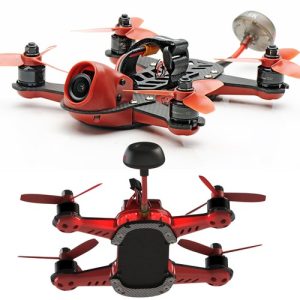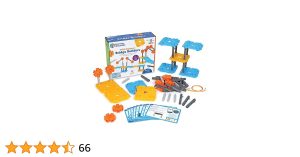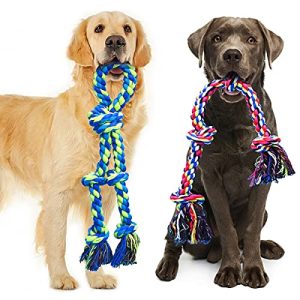Are you looking for a fun and creative way to help your child learn numbers? DIY Wooden Toy Number Blocks might be just what you need.
These simple, handmade toys not only spark your child’s imagination but also make learning numbers exciting and hands-on. Imagine your little one stacking colorful blocks while recognizing digits and practicing counting—all made by you! Keep reading to discover how easy it is to create these charming toys that bring both joy and education right into your home.
Benefits Of Wooden Number Blocks
Wooden number blocks are simple toys that help children learn numbers. They offer many benefits for young learners.
These blocks support early math skills, motor development, and creativity. They are a great learning tool for kids.
Enhancing Early Math Skills
Wooden number blocks help children recognize numbers and understand counting. They also teach basic math concepts like addition and subtraction.
- Identify numbers by shape and color
- Practice counting by stacking blocks
- Learn simple addition and subtraction
- Understand number order and value
Boosting Fine Motor Development
Handling wooden number blocks improves hand-eye coordination. Children develop better control over their fingers and hands.
| Activity | Motor Skill Developed |
|---|---|
| Stacking blocks | Hand strength and coordination |
| Picking up blocks | Finger dexterity |
| Placing blocks in order | Precision and control |
Encouraging Imaginative Play
Wooden number blocks inspire creative play. Children use them to build shapes, tell stories, and explore ideas.
Examples of imaginative play with number blocks:
- Building towers and castles
- Creating number patterns and designs
- Using blocks as characters in games

Credit: www.youtube.com
Materials And Tools Needed
Making wooden toy number blocks is fun and simple. You need the right materials and tools to build safe and strong toys.
This guide explains what wood to pick, the tools to use, and safe paints and finishes for your blocks.
Choosing The Right Wood
Pick wood that is strong but easy to cut. Soft woods like pine work well for beginners. Hardwoods like maple are durable but harder to shape.
Make sure the wood has no knots or cracks. Sand it smooth to avoid splinters. Avoid treated wood to keep toys safe for children.
- Pine – soft and easy to cut
- Maple – hard and long-lasting
- Birch – smooth and fine-grained
- Avoid pressure-treated or painted wood
Essential Crafting Tools
Use basic woodworking tools to create your number blocks. These tools help you cut, shape, and smooth the wood safely.
Always wear safety gear like goggles and gloves. Keep your workspace clean and organized for best results.
- Hand saw or jigsaw for cutting wood pieces
- Sandpaper or sanding block to smooth edges
- Wood glue for joining pieces (if needed)
- Clamps to hold pieces while drying
- Measuring tape and pencil for marking cuts
- Safety goggles and gloves
Safe Paints And Finishes
Use non-toxic paints and finishes made for children’s toys. These keep the blocks safe to handle and chew on.
Water-based paints dry quickly and have less smell. Natural oils and waxes protect the wood without harmful chemicals.
- Non-toxic, water-based acrylic paint
- Food-grade mineral oil for finishing
- Beeswax or carnauba wax for a smooth finish
- Avoid paints with lead or strong solvents
Basic Steps To Create Number Blocks
Making wooden number blocks is a fun and simple project. You can create toys that help kids learn numbers.
This guide shows easy steps to cut, paint, and protect the blocks for long use.
Cutting And Sanding The Wood
Start by choosing a soft wood like pine. Cut the wood into small square blocks. Each block should be the same size.
Use sandpaper to smooth all edges and surfaces. Sanding makes the blocks safe for children to handle.
- Measure and mark the wood carefully
- Cut with a saw or have it pre-cut
- Sand all sides to avoid splinters
- Check that blocks are uniform in size
Painting Numbers And Designs
Paint each block with bright colors to attract kids’ attention. Use non-toxic paint for safety.
Write numbers clearly on one side of each block. Add simple designs or dots on other sides to make learning fun.
- Choose safe, child-friendly paint
- Use a fine brush for numbers
- Let paint dry completely before next step
- Optional: add shapes or patterns on sides
Sealing For Durability
Apply a clear sealant to protect the paint and wood. This helps blocks last longer and resist water damage.
Use a non-toxic, child-safe sealant. Let it dry fully before use to keep the blocks safe and shiny.
- Choose a safe, clear wood sealant
- Apply thin, even coats with a brush
- Allow each coat to dry well
- Repeat if needed for better protection

Credit: happinessishereblog.com
Creative Design Ideas
Diy wooden toy number blocks are fun and educational. You can make them colorful and interesting.
Using creative designs helps children learn numbers and shapes better. Try these ideas for your blocks.
Color Coding By Number
Color coding helps kids match numbers with colors easily. Use bright and different colors for each number.
- Use red for number 1
- Use blue for number 2
- Use green for number 3
- Use yellow for number 4
- Use orange for number 5
Incorporating Shapes And Patterns
Adding shapes and patterns makes the blocks more fun to touch and see. Shapes help children learn geometry.
| Shape | Pattern | Example |
| Circle | Dots | Number 1 block |
| Square | Stripes | Number 2 block |
| Triangle | Checks | Number 3 block |
| Star | Swirls | Number 4 block |
Adding Educational Symbols
Symbols teach children more than just numbers. Use simple icons that relate to counting and learning.
Try these symbols on your blocks:
- Plus and minus signs for basic math
- Small animals to count
- Arrows to show order
Fun Activities With Number Blocks
Diy wooden toy number blocks help children learn while playing. These blocks make math fun and hands-on.
Kids enjoy exploring numbers in many creative ways. Using blocks, they improve skills like counting and sorting.
Counting And Sorting Games
Children can count the blocks aloud to practice numbers. Sorting blocks by size or number helps them see patterns.
Sorting games teach kids how to organize and compare objects. This builds early math and thinking skills.
- Count blocks from 1 to 10
- Sort by color or number
- Group blocks by size or shape
- Match blocks with the same number
Simple Math Challenges
Number blocks can create easy math problems. Kids add or subtract blocks to find answers.
These challenges improve basic math skills. Playing with blocks makes learning fun and less scary.
- Add two blocks and count the total
- Subtract blocks and see how many remain
- Build number towers to compare heights
- Use blocks to practice skip counting
Storytelling With Blocks
Number blocks can also tell stories. Kids arrange blocks to create characters or scenes.
Storytelling sparks imagination and language skills. Children explain their block stories using numbers.
- Create a number family with blocks
- Build scenes using number sequences
- Tell a story about block adventures
- Describe the blocks and their numbers

Credit: www.amazon.com
Safety Tips For Crafting And Play
Creating DIY wooden toy number blocks is fun. It is also a great way to engage children creatively. Safety must be a top priority during crafting and play.
Follow these guidelines to ensure a safe and enjoyable experience for both adults and children.
Handling Tools Properly
Using tools safely is important when crafting wooden toys. Always use appropriate tools for each task.
- Wear protective gloves to prevent cuts.
- Keep tools out of children’s reach.
- Use clamps to hold wood steady.
Non-toxic Materials For Kids
Choosing safe materials protects children from harmful substances. Ensure all paints and finishes are non-toxic.
| Material | Safety Feature |
| Water-based paint | Non-toxic, easy to clean |
| Natural wood | Free from chemicals |
| Beeswax finish | Safe for children |
Supervising Young Children
Supervision is crucial when children are playing with or making toys. Always keep an eye on young ones to ensure their safety.
Expanding The Collection
Building a collection of DIY wooden toy number blocks is fun. You can expand it with new ideas and creativity.
Explore different ways to add more blocks to your set. Use alphabet blocks, themed sets, or personalize them for gifts.
Adding Alphabet Blocks
Alphabet blocks can make your collection more versatile. They help children learn letters and words.
- Paint each block with a different letter
- Use bright colors to attract attention
- Include both uppercase and lowercase letters
Creating Themed Sets
Themed sets can make playtime more exciting. Choose themes that interest children.
| Theme | Ideas |
| Animals | Paint animals on each block |
| Space | Add stars and planets |
| Nature | Include trees and flowers |
Personalizing For Gifts
Personalized blocks make special gifts. Add names or special dates to make them unique.
Frequently Asked Questions
What Materials Are Needed For Diy Wooden Toy Number Blocks?
You need wooden blocks, non-toxic paint, sandpaper, brushes, and stencils. These materials ensure safe, durable, and colorful number blocks for kids. Using quality wood and safe paint makes the toys child-friendly and long-lasting.
How To Safely Paint Wooden Number Blocks?
Use non-toxic, water-based paints to ensure safety. Apply thin layers and let each dry fully. This prevents choking hazards and keeps the colors vibrant and safe for children’s play.
What Age Group Suits Diy Wooden Number Blocks?
Wooden number blocks are ideal for children aged 2 and above. They help develop counting skills and hand-eye coordination. Always supervise young children during play to ensure safety.
How Can Wooden Number Blocks Aid Early Learning?
They improve number recognition, counting ability, and fine motor skills. Blocks encourage interactive play and cognitive development. Using them regularly boosts children’s math confidence and creativity.
Conclusion
Creating DIY wooden toy number blocks can be fun and simple. These blocks help kids learn numbers while playing. You can choose your favorite colors and designs. Making them yourself adds a personal touch. Kids enjoy stacking and counting with these toys.
Wooden blocks last long and are safe to use. This project brings creativity and learning together. Start building and watch children explore numbers happily. A great way to spend quality time at home. Try this easy craft and see the joy it brings.





